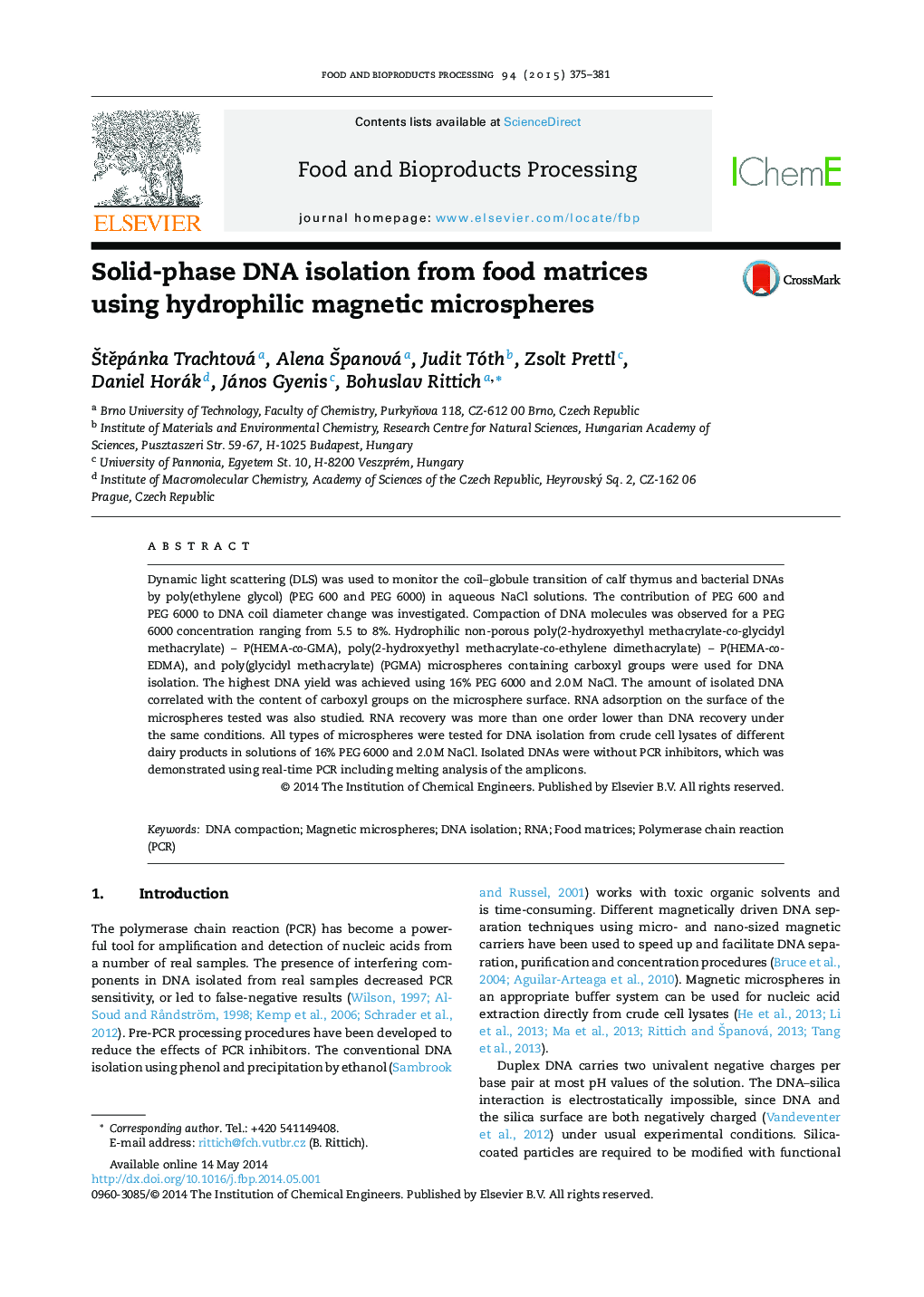| کد مقاله | کد نشریه | سال انتشار | مقاله انگلیسی | نسخه تمام متن |
|---|---|---|---|---|
| 18929 | 43037 | 2015 | 7 صفحه PDF | دانلود رایگان |
• Determination of the effect of PEG 600 and PEG 6000 on DNA coil diameter.
• Development of hydrophilic non-porous magnetic microspheres containing carboxyl groups.
• Correlation of the amount of isolated DNA with the content of COOH groups on the microspheres.
• Isolation of PCR-ready DNA from food samples by magnetic microspheres.
Dynamic light scattering (DLS) was used to monitor the coil–globule transition of calf thymus and bacterial DNAs by poly(ethylene glycol) (PEG 600 and PEG 6000) in aqueous NaCl solutions. The contribution of PEG 600 and PEG 6000 to DNA coil diameter change was investigated. Compaction of DNA molecules was observed for a PEG 6000 concentration ranging from 5.5 to 8%. Hydrophilic non-porous poly(2-hydroxyethyl methacrylate-co-glycidyl methacrylate) – P(HEMA-co-GMA), poly(2-hydroxyethyl methacrylate-co-ethylene dimethacrylate) – P(HEMA-co-EDMA), and poly(glycidyl methacrylate) (PGMA) microspheres containing carboxyl groups were used for DNA isolation. The highest DNA yield was achieved using 16% PEG 6000 and 2.0 M NaCl. The amount of isolated DNA correlated with the content of carboxyl groups on the microsphere surface. RNA adsorption on the surface of the microspheres tested was also studied. RNA recovery was more than one order lower than DNA recovery under the same conditions. All types of microspheres were tested for DNA isolation from crude cell lysates of different dairy products in solutions of 16% PEG 6000 and 2.0 M NaCl. Isolated DNAs were without PCR inhibitors, which was demonstrated using real-time PCR including melting analysis of the amplicons.
Journal: Food and Bioproducts Processing - Volume 94, April 2015, Pages 375–381
